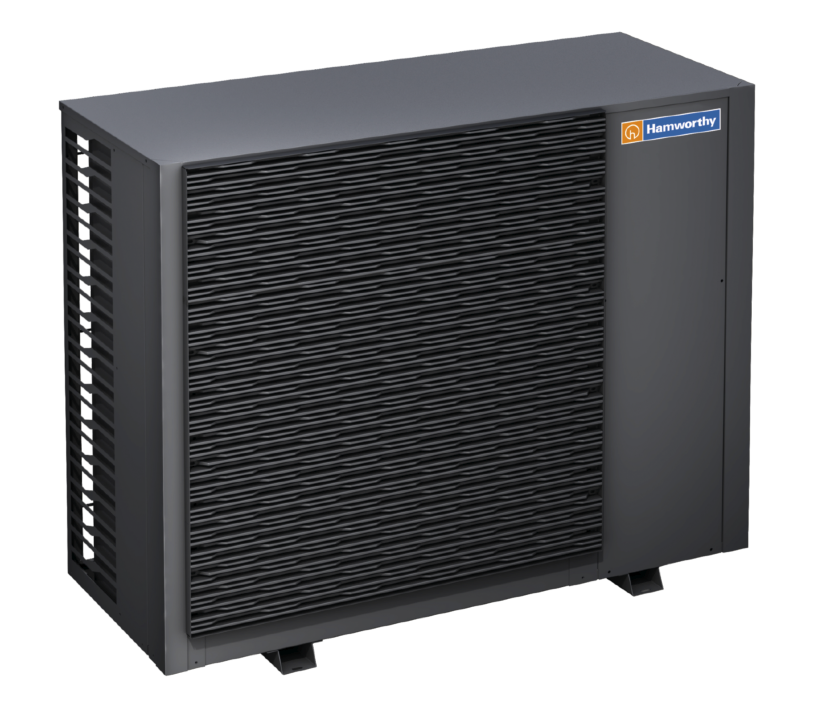ErP-compliant boilers & the Energy-related Products Directive
Explaining the ErP Directive for boilers
The Energy Related Products Directive (ErP) set new efficiency levels for products. Below we look at what levels of efficiency are currently required for commercial boilers and how this fits with the Building Regulations Part L.
Jump to section
Commercial boiler efficiency
The requirements for Lot 1 of the Energy Related Products Directive (ErP), which includes fossil fuel boilers with 70kW to 400kW rated input, has a significant impact on the commercial boiler market.
The ErP Directive has effectively eliminated most high efficiency non-condensing boilers up to 400kW, from being placed on the market by boiler manufacturers and importers.
This was a massive shake-up for the industry, with seasonal efficiency bands tightened for both new build and existing buildings. More small to medium size installation projects now effectively require a condensing boiler solution. For refurbishment projects, this means further considerations such as replacement flues, and system pumps may have to be included over and above the commercial boilers and localised pipework. Plus, if new condensing boilers are to deliver the best energy savings possible a review of the controls system on site may also be required. You can read about the importance of controls in achieving max efficiencies from a multiple condensing boiler system.
Boiler efficiency levels explained
How does the Energy Related Products Directive fit with Building Regulations Part L?
There are some disparities between Building Regulations Part L and the ErP directive, but ultimately you need to comply with the greater level of boiler efficiency.
The table above shows the minimum boiler gross seasonal efficiencies for both regulations.Part L 2013 applies to single boilers as well as multiple boiler installations, whereas ErP only applies to single boilers. For example, under Part L single Natural Gas boiler installations less than or equal to 2MW, must have minimum gross seasonal efficiencies of 91% in new build installations. But under the ErP directive boilers up to 400kW must have minimum gross seasonal efficiencies of 92.5% (effective 2015).
Part L 2013 has not changed for existing buildings since the 2010 requirements, but the ErP Directive applies to both new build and existing buildings. So more stringent rules will apply to boilers up to 400kW installed in existing buildings.
What is missing from the ErP Directive?
ErP is seen as the driving force for boiler efficiency improvements. But what the directive fails to recognise is that condensing boilers only achieve these efficiencies if installed, set up and controlled in the most effective way.
We look at this in comparison with the car industry to see who will actually be driving the improvements. Read here.
How ErP affects pressure jet boilers
One of the changes that affected our product range last year was pressure jet boilers (or powerflame boilers as they are also referred to). Up until December 2017 you could purchase non-condensing power flame or pressure jet boilers under 400kW as a like-for-like replacement with a separate burner. Since January 2018, our Ensbury powerflame boilers under 400kW are no longer be available.
You can still buy condensing powerflame boilers like our Melbury C as these meet the boiler efficiency criteria. You can also install pressure jet boilers over 400kW as these are outside the scope of the ErP Directive – some Ensbury boiler models and Melbury HE powerflame boilers.
How ErP affects circulating pumps
From the 1st August 2015 the circulating pumps inside our commercial boilers changed from fixed speed pumps to variable speed pumps. This is to lower energy consumption and comply with the Energy Related Products Directive ErP. But what do the new rules for ErP compliant pumps mean and how will you benefit?
For commercial boilers this means circulating pumps have changed from fixed speed to variable speed. This affects all glandless pumps with integrated electric motor, and the motors of glanded pumps.
The A-G rating has been replaced with an EEI (Energy Efficiency Index) rating. Why? The previous A class pumps had an equivalent EEI rating of 0.4. The ErP directive dictates that the EEI rating for circulating pumps must be less than 0.23. Therefore newer pumps will have a significant reduction in energy consumption over older A rated pumps.
Due to the change in size of the pumps if you are replacing an internal pump you can still buy the equivalent fixed speed pump from the manufacturer up until 2020.
From August 1st 2015 all product integrated pumps had to comply with the ErP directive.
The energy efficiency banding rating has changed.
External pumps used for heating and air conditioning systems have required compliance with the ErP directive since 1st January 2013.
DHW circulating pumps are excluded from the scope of ErP compliant pumps, for now.
Replacements for product integrated pumps do not have to comply, for now.
This is compared with a fixed speed pump running at full speed. At minimum operating speed energy savings as high as 95% can be realised.
Before the ErP directive, variable speed pumps would generate maximum torque at their maximum speed so were more prone to sticking. The high starting torque of the new ErP compliant pumps helps prevent sticking in normal operation.Due to lower energy use the pump motor produces far less heat.By reducing flow as system demand decreases problems associated with over pumping such as noise and excessive energy usage are minimised.Let’s explain this. The variable speed pumps can operate at higher speeds (rpm) therefore diameter of impellor can be reduced resulting in lighter and more compact pump bodies. However, the more complex electronics require typically larger controls housing so the overall pump size may be larger. This is why replacement pumps do not have to comply.
ErP compliant pumps provide energy savings of around 50%.
ErP compliant pumps can generate up to 5 times higher torque.
Casing energy losses are reduced.
ErP compliant pumps can be set to react to changing system conditions.
ErP compliant pumps are lighter and smaller (but full product size may be larger!)
ErP compliant pumps are used inside our Varmax and Stratton condensing boilers.









